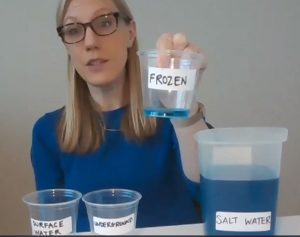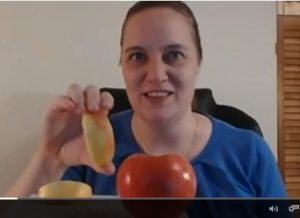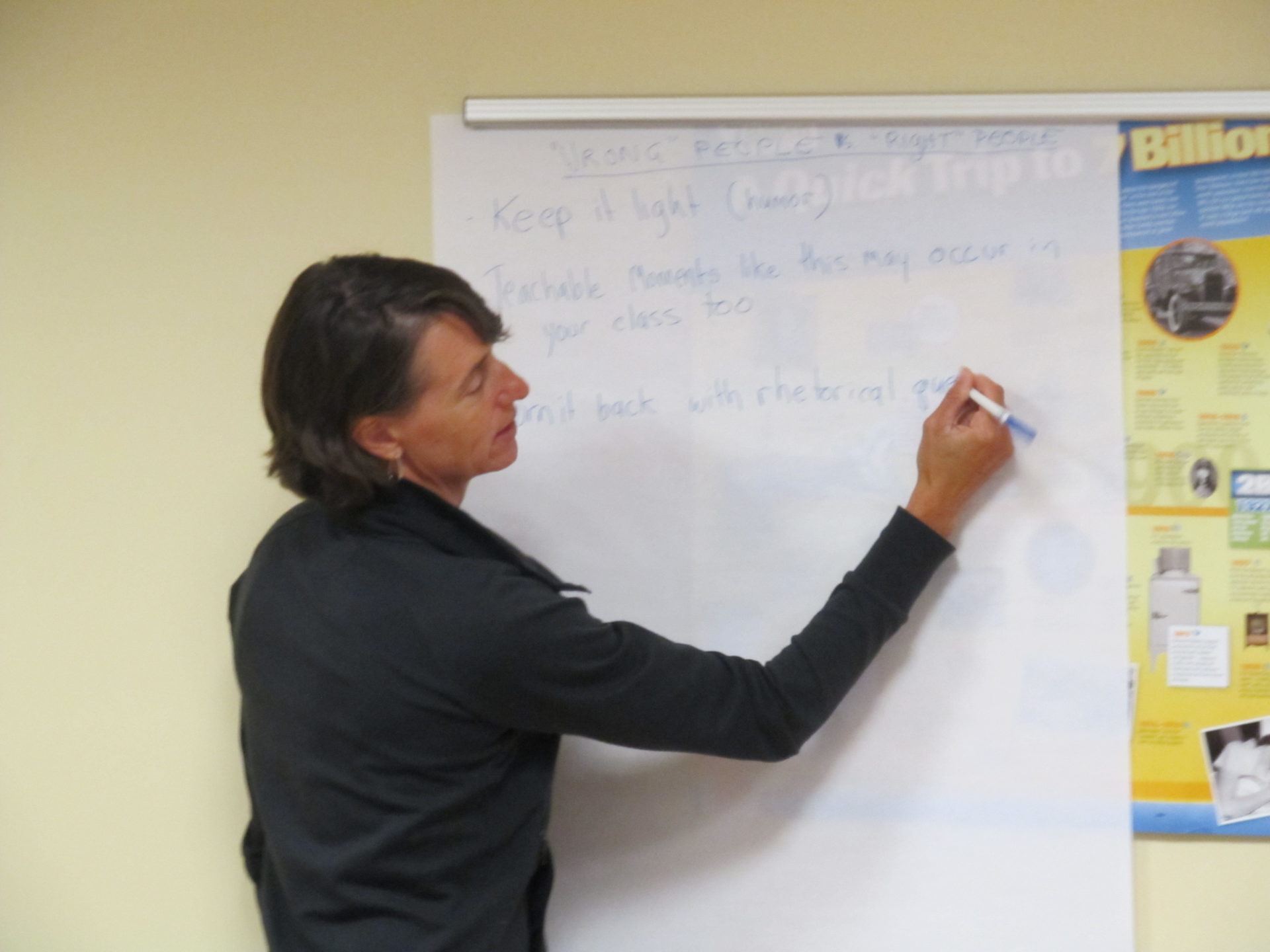PopEd: In-Home Edition
Written by Pamela Wasserman, Senior Vice President for Education | Published: June 1, 2020
Social Distancing Not Stopping Our Work With Teachers
In a typical spring, PopEd staff would be crisscrossing the country, facilitating workshops with current and future teachers on campuses, in K-12 schools, and at conference centers. In mid-March, these plans, along with everyone else’s plans everywhere, came to a screeching halt. As the inevitable spread of the coronavirus pandemic became apparent, schools closed, conferences were canceled, and everyone working in education had to figure out how to reinvent learning for a virtual classroom.
In the few days before our DC office closed and our PopEd team decamped to our new home offices in bedrooms and kitchens, we made some plans. We’d offer all of the workshops we were scheduled to do from Maine to Arizona, but as webinars. They could be live webinars with participant interaction, recorded webinars for use any time, or short courses customized for different audiences. Teacher education faculty, scrambling to develop online content for the rest of their semesters, jumped at the chance to have us visit their classes remotely. We knew virtual presentations would be a different experience than in-person workshops, but we all got creative in thinking of ways to give the classes useful instruction and a feel for how our population education activities would work in their future classrooms with children and teens.
The PopEd Zoom Room

Fortunately, we weren’t starting entirely from scratch. We already had some elements we could incorporate into engaging webinars—demo videos of 30 of our activities, PowerPoint slide decks to walk participants through many of our lessons, and some creative props for live demonstrations. But how would we interact with each group? The hallmark of our in-person workshops is getting participants up and moving through the activities with us, asking questions, and offering ideas.
While it’s no substitute for being in the same room with everyone, our Zoom webinars do allow us to have discussions and use the written chat function for participants to ask and answer questions and respond to classmates. After our first few visits to the Zoom room, we decided a buddy system for facilitation was best—one person to present the webinar; one person to monitor the chat and keep things moving. This tag-team approach has also been invaluable when technical glitches arise—WiFi hiccups, webcam glitches, and the like. With over 50 webinars presented through the end of April, we’ve had plenty of opportunities to hone our techniques. If the demand for webinars continues into the summer and fall, we’ll be ready.
Lessons for Homebodies
Teachers don’t have to attend a webinar to access PopEd lessons this spring.

There are plenty of activities and student readings for free download. Before the stay-at-home orders went into effect, we posted a blog article titled “28 Learning Activities & Lesson Plans for Students’ Distance Learning at Home.” In it, we highlighted teaching resources for different grade levels and disciplines that could easily be included in K-12 teachers’ digital classrooms.
Teachable moments this spring, including the 50th anniversary of Earth Day and the kick-off of the 2020 U.S. Census, also gave us opportunities to share more great lessons that could easily be adapted for remote learning. Our Earth Day Lessons for Distance Learning webinars in April attracted hundreds of participants, many of them new to PopEd.
Teaching About U.S. Trends
Already in production when our exile began is a new curriculum set, 330 Million in the USA, inspired by the 2020 Census. It includes 14 activities for middle and high school students that fit well into a U.S. history and civics curriculum with lessons on changing U.S. trends (population growth, family life, immigration, transportation, political representation, environmental activism, and more). Most of these new lessons can be done successfully in a virtual classroom. Many include primary sources from the past 230 years, including historical census data, archival images and footage, and some of our nation’s most important documents, such as the Federalist Papers and the original Social Security Act. The lessons also help students make sense of current hot-button issues including gerrymandering, immigration, and wealth inequities.
To enhance the lesson plans, 330 Million in the USA also includes readings on historical trends related to education, work, family, transportation, diet, and environmental policies (and how current trends affect current middle and high school student—Gen Z). A set of infographics also marks trends in population, housing, immigration, and wealth.
Praise for PopEd Webinars
“Thank you for a wonderful interactive session tonight. It was perfect! I appreciate all the effort you put into making this meaningful for my students and me. Population Education has always been a professional group with whom to collaborate. You surpassed my expectations for this session.”
–Elizabeth O. Crawford, Associate Professor, UNC-Wilmington, North Carolina
“The virtual presentation was wonderful. I especially enjoyed the way there was an assignment woven in (the three response questions that students had to answer); that was so helpful.”
–Rina Bousalis, Assistant Professor, Florida Atlantic University
“I found your presentation to be both engaging and informative! The resources I have gained from your presentation have made me more confident in my abilities to teach social studies and for that I cannot thank you both enough! Also kudos to you both on being flexible with technology. ’Rona has made a mess of easy communication, but you both handled it well.”
–Rebecca Langdon, Student Teacher, Columbia College, South Carolina
“Awesome. I have information, knowledge, and tools for my students to better understand population and its effects on the environment or global climate. One of the best webinars I attended in many years.”
–Enid Perez, Science Teacher, Creedmoor, North Carolina
“I think this is hugely important and really timely. We talk a lot about creating activities that our students will connect with and that will have relevance to their everyday lives, and this is certainly up there.”
–Joshua Ellis, Assistant Professor, Florida International University

